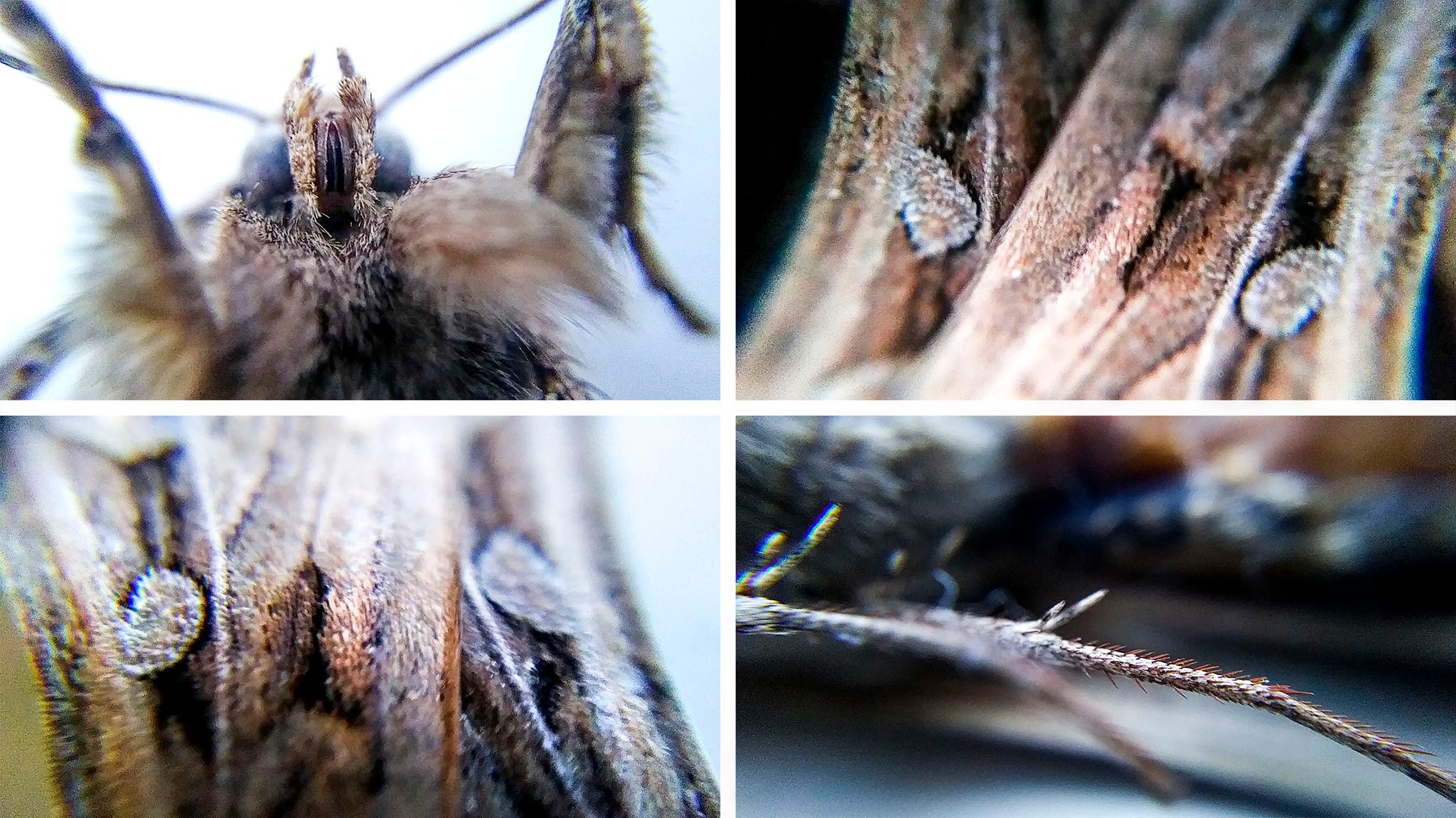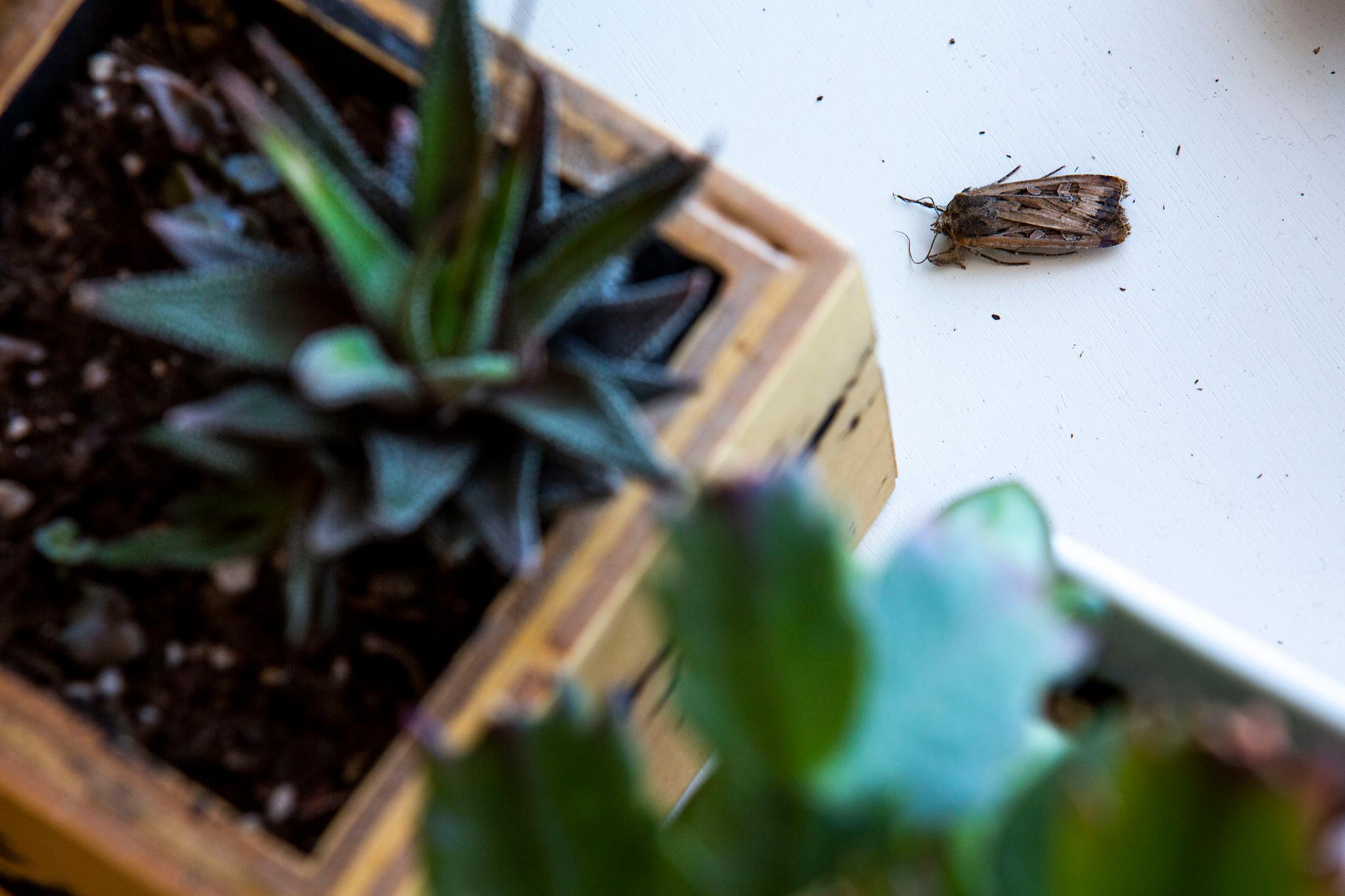What's the deal with all these moths in Denver?
Well, intrepid reader, we have an expert to walk you through that question. Frank Krell is the Denver Museum of Nature and Science's curator of entomology. While his passion is beetles of the dung variety, he's also very familiar with the fluttering bugs that have swept over the city in recent weeks.
They're called miller moths, a variety of Noctuidae (known as owlet moths), and Krell said they've migrated through this region for millennia.
Why are there so many miller moths in the spring?
Miller moths start out as caterpillars that develop on Colorado's eastern plains and in Kansas and Nebraska, Krell said. In the spring, they migrate west.
"The common thought is that they do that to find more flowers because they feed on nectar," he said.
They fly back east in the fall, too, but we usually don't notice their return because so many of them die during the summer.
This year, Krell said, we've seen more moths than previous springs because weather conditions last year were favorable for caterpillar development. But this isn't anything extraordinary. He said we've seen this many in other years preceded by mild winters.
"This is mainly an issue of memory," he said.
Plus, it's worth noting, Denverites have been reporting a lot of wildlife since they've been stuck at home. There may be some observation bias at play.
"So it's not something particularly exciting or interesting that we have so many miller moths," Krell said. "I'm never excited to see miller moths because I know them already and they're coming in the house through every crevice they can find -- that's why they're called a serious nuisance pest."

Should you be worried about moths in your house?
Unless you're particularly allergic to moth scales, Krell said miller moths won't do a darn thing besides annoy you.
"They don't do anything, actually," he said. "They just get in your house and die, and then you have lots of dead moths in the house. It's all that they do."
While other moth species might like to eat your wool sweaters, these do not. They just eat pollen, make your house dusty and die.
Why are they called miller moths?
"It has nothing to do with the senior advisor to the president or any other Millers really these days," Krell said. "In the old times, a miller was somebody who was always dusty."
As they flutter, he said, they lose scales and sprinkle them everywhere. If they're in your home, they're going to leave particles behind.
"They don't want to lose their scales either," Krell said. "They just flutter around to escape from our confined places and fail, and fly into windows and flutter and lose their scales. And that's how it goes. Poor little creatures."

Why did your dog eat a miller moth?
The little flutterers, Krell said, are actually key pieces in the larger natural food chains around us. Predatory insects love to eat their caterpillars. Birds eat them in flight. And bears eat a LOT of miller moths.
"They're a very important food source for bears," he said. "A single bear can eat up to 10,000 miller moths a day, and that helps them get fat for the winter."
The moth's abdomens, besides housing "guts," also store a lot of fat that they stock up for the long autumn trip back to the plains. They hide under rocks in the mountains during the day. That's where bears find them, flipping over stones and grabbing a quick bite.
"The bears and birds, they take advantage of that because it's a very, very nutritious food," Krell said.
Why must they enter your house and die?
The bottom line, Krell said, is light.
"They don't want to come into our houses, they are attracted to light," he said. "They were here long before we were, long before we built our houses here. They have been migrating for thousands of years from the eastern plains to the mountains and now we are in the way."
So, if you want to decrease your home's moth input, Krell suggests using bulbs that shine more yellow than blue and covering your windows with curtains at night -- or just shutting your lights off when you don't need them.
"We built houses, we built light bulbs, and now we feel threatened or annoyed by them. But it's actually totally our fault because they were here first and we attract them," he said.

That said, part of living in an ecosystem just requires learning to live with your neighbors.
"Of course," he said, "if millions come by, some will find their way in your house."











